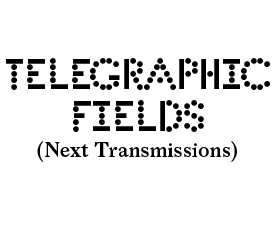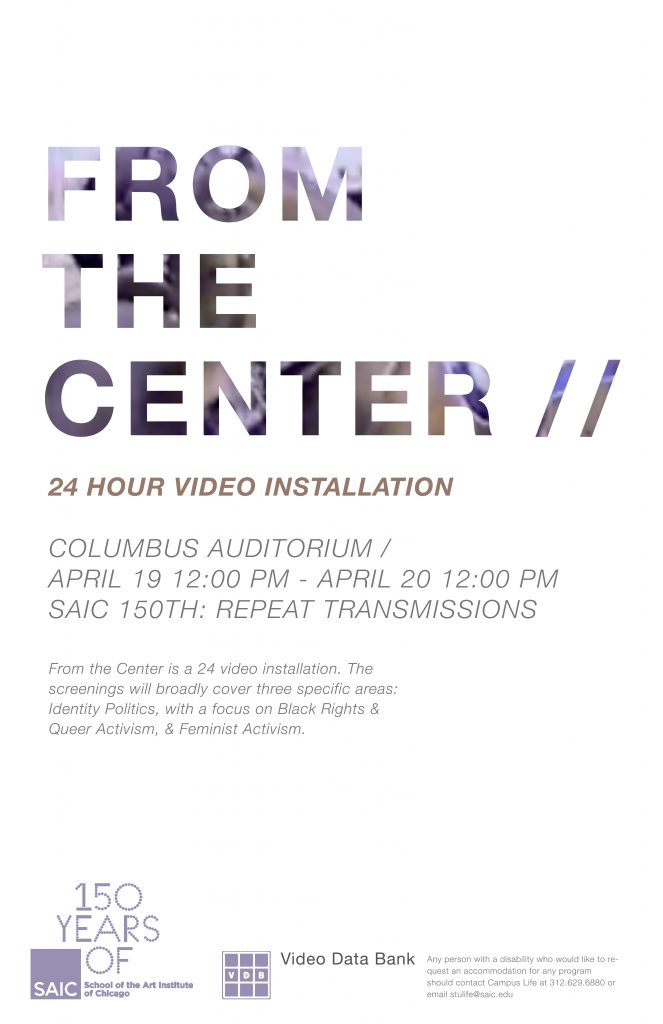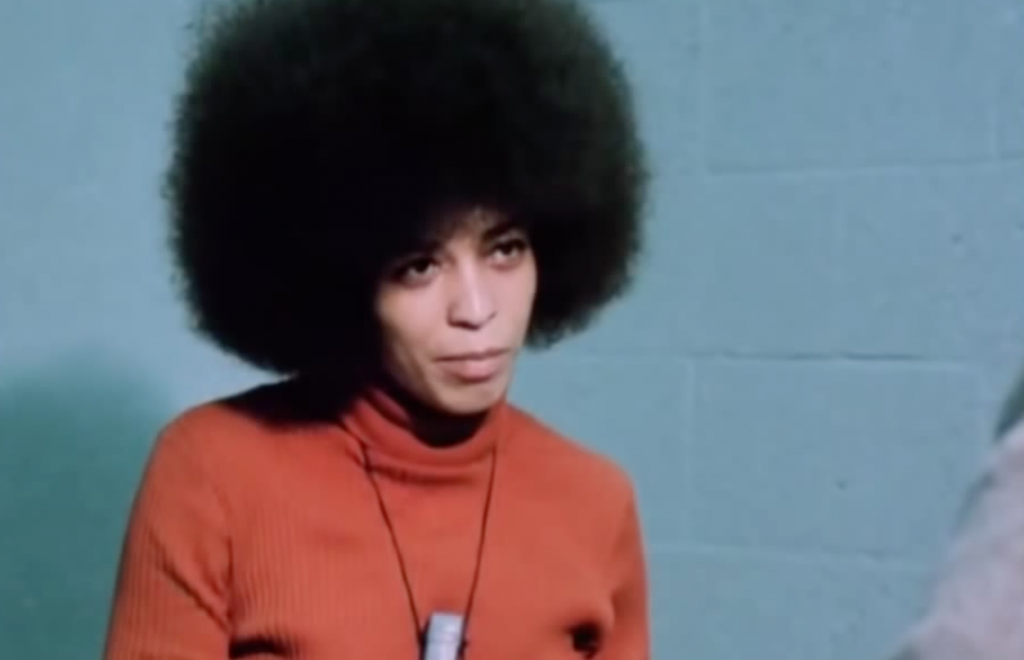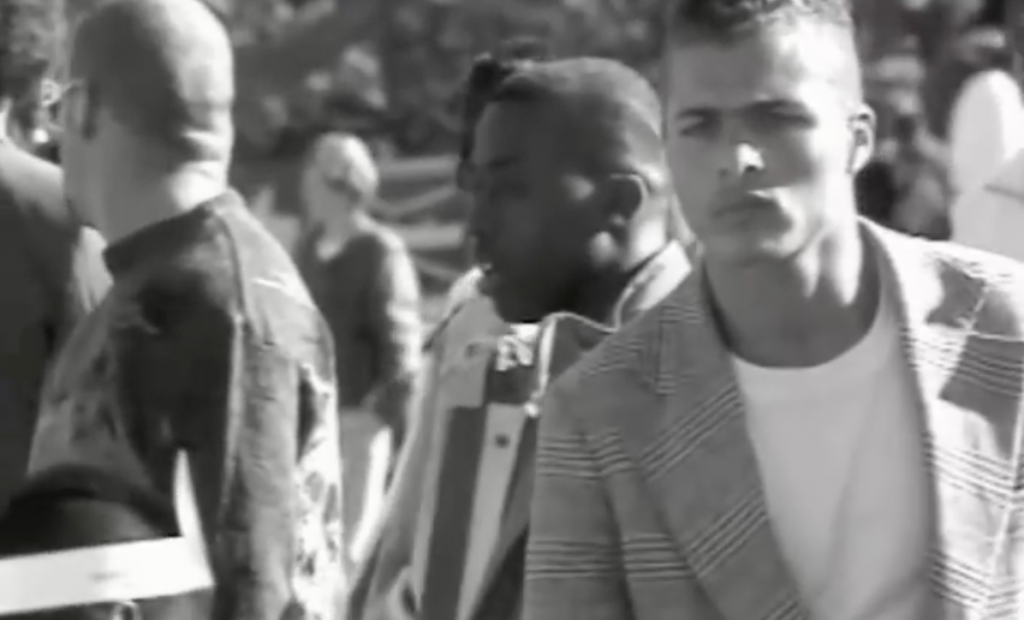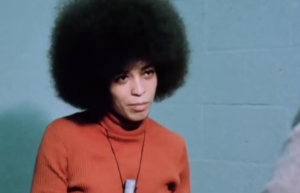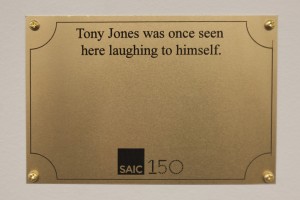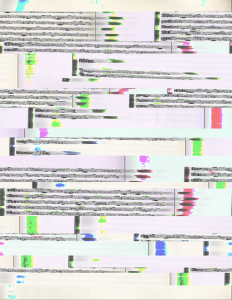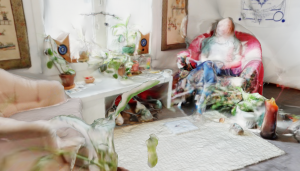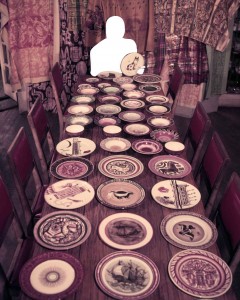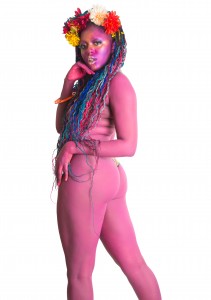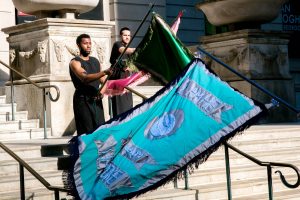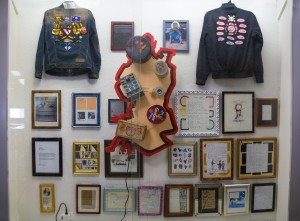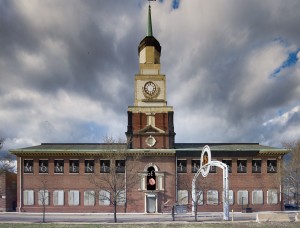Elizabeth Housewright (BFA 2016) is a fourth year sculpture student working in metal, wood and concrete. Housewright explores the prosthetics and fixtures of maintenance as they relate to sacred space and church architecture.
From the Center is an exploration of Video art and Activism at SAIC in two parts. The first will be in-depth writings on early video histories of the school, to be published through the class’s publication. The second is a 24 hour screening on view from the 19th to the 20th of April. The screenings will be broadly cover three specific areas: Identity Politics, with a focus on Black Rights and Queer Activism, and Feminist Activism.
Original Air Date: 19th April – 20th April 2016, SAIC Columbus Auditorium, 280 S.Columbus Dr.
Special thanks to the Video Data Bank for providing the following titles for screening:
Viewpoints on Video: Envisioning the Black Aesthetic | Long Beach Museum of Art
Know Your Enemy | Art Jones
Elizabeth Murray 1977 | Kate and Lyn
Marcia Tucker 1974 | Kate and Lyn

When presented with the year 1976, the active video histories during this time became my main area of interests. Starting with Kate Horsfield and Lyn Blumenthal‘s video interviews taken during and shortly after their time as Graduate students at SAIC, I began to explore the rich histories of female artists working in Chicago and the United States during the 1970’s. From these videos I selected moments and segments from certain interviews to express the positions of these women as individuals and as a whole.
The three videos displayed in the ‘First Transmission’ create interplay between different histories within the school. The Kate and Lyn interviews were taken using a Sony Portapak, Phil Morton’s videos were created using the Image Processors and the video of Edgar Hellum was created using a personal video camera from the late 1990’s. By placing these videos in conjunction, the evolving technologies are present in their form – a form further complicated by their display on contemporary flat-screen televisions and Christie module monitors (technologies that too face a fate of irrelevancy as technologies continue to evolve.)
When reentering the project in semester 2, I was struck with the clear depth of video art’s relation to political activism. Kate and Lyn were interested in interviewing female artist during the 1970’s due to the sheer lack of the female voice in the art world. Their videos activated feminist rights and voice within the art word and beyond. They created these videos with the Sony Portapak, released in the 1960’s. It served as one of the first affordable modes of home and self-documentation. Political activist took advantage of this technology along with broadcasting through television (including illegal guerrilla television). Guerilla Television is a mode of creating a system for broadcasting that is not regulated by the Government. The video group TVTV and Videofreex installed broadcasters and antennas and created their own Television shows within the small community of Lanesville, New York.
Organizations like the Bootstrap Project in Los Angeles’ African American community and Black Power Mix Tape created collections of slam poetry recording over documentation of factory work lines, documentation of group meetings, and interviews with prominent member’s of the community. These videos were meant to be streamed through public television to wide audiences, locally and nationally. These videos serve as activist capital for the groups.
If it isn’t documented does it happen? When you reflect on past freedom struggles such as the Women’s Suffrage Movement of the 1800’s or the earliest freedom struggles of African American’s in the United States, there are no videos and few photographs that represent their thoughts and ideologies. The representation is limited and the few moments of documentation are seen through the eyes and scribed at the hands of the oppositional parties and news sources. By placing the mode of documentation (the video camera) into the hands of the activists their labor is swallowed up by the camera and able to be fed to audiences.
The Video Data Bank has created a highly influential collection of history, but in the same vein has made much of its content inaccessible to wide audiences. Viewing opportunities are limited and the general public is not authorized to check out the videos for larger consumption.
The Video Data Bank was created by Lyn and Kate upon graduating from SAIC. The collection quickly grew and now exists as one of the largest disturbing collections of video documentation and video art in the world. The videos fall into three categories: video art, documentation (of an event or a performance) and interviews. The VDB was created out of necessity. Phil Morton, upon starting the video department at SAIC realized he needs a collection of video if he was going to teach video to students. He began to acquire videotapes and placed them in a small wooden box in a closet of what we now recognize as the performance space of the Columbus Drive Building. Many of the students in the video department could not afford the tapes required to shoot so the box of art became a source for free tapes. Many of the early original videotapes were record over or lost.
The VDB today is a very controlled collection with a set structure of viewing and distribution. All artists are credited and they or their estates are given royalties for any viewing of their work. On the other hand there is the philosophy of Phil Morton: Copy-it-right. Phil Morton believed that video and technology existed in a web that and were meant to be shared. Upon creating the Image Data Processor, Morton and his collaborators created a small mailer and sent it to any individuals who wanted to create a processor.
If its not documented does it happen?
Much video documentation and video art still exists in the realm, knowingly or unknowing with the creation of the Internet. Many of the videos within the Video Data Bank’s walls can be found and streamed for free on multiple platforms. However hard an institution or collection may attempt to hold tight to their digitized material the material still leaks into the hands of the world by way of the Internet.
I was struck with the issues of distribution and the legality of streaming an individual’s work specifically as it relates to activist video. The videos created in relation to a group’s activist work serves as a token of proof that this event happened. The video is a captured section of light and sound that spotlights a moment of work.
When Larry Kramer sits in front of the New York Act Up community and screams, “Plague! We are in the middle of a fucking plague!… Plague! 40 million infected people is a fucking plague!”, the viewers are brought to a specific moment in time – uncharted and unscripted – that serves as evidence for the altercations that transpired around attempts towards change. When the camera pans across the hands of Nina Simone playing the piano singing “Mississippi Goddamn” in front of a club filled with a white audience, the viewer witnesses her context. When a small hand held camera clicks and shakes in a Russian Cathedral zooming quickly into members of the Pussy Riot playing at the Alter as a nun runs up and covers the lens with her hands, we understand the depths of their gesture.
These moments deserve artist recognition, these moments deserve to be recognized as fine art, but still these moments beg to be viewed and distributed to individuals as evidence of the alternative histories of the United States and our global atmosphere.
Performing within this pull between legality and hopes of distributing histories of activism I created the event, From the Center (a nod to Lucy Lippard’s book, From the Center.) In SAIC’s Columbus Drive Auditorium I installed 3 hours of open source video and 3 hours of video from the Video Data Bank’s collection. The videos concentrated on three parts: racial activism (focusing on Black activism), gay rights activism and feminist activism. Within those three categories the videos included the documentation of group gatherings, video art and interviews. For 24 hours these videos were transmitted. The auditorium served as an incubator and the event served as an opportunity for homage to the auditorium that will be closed and renovated into studios.
Functioning under the Phil Morton’s copy-it-right mantra I place myself in both a position as viewer and active participant in the archive. I am a patron of the archive and its contents while also using this as a medium to fuel a reinvention of the past. Like Marlene Klos’ video, Lightning, I am looking towards the past for small strikes of lightning, then turning towards the future. In this way we become active care takers of our respective years – carrying a banner for the past patrons of history.
The medium of video, although linear at its inception, provides for a curated and re-imagined narrative. Video becomes a simulacral medium that can be fragmented and re-mended to create the new out of the rubble of the past – to tell new narratives through the medium of the old. This archive, although stagnant and hindered by long gone technologies and material decay, reverberates new life when re- contextualized within our collective present.
